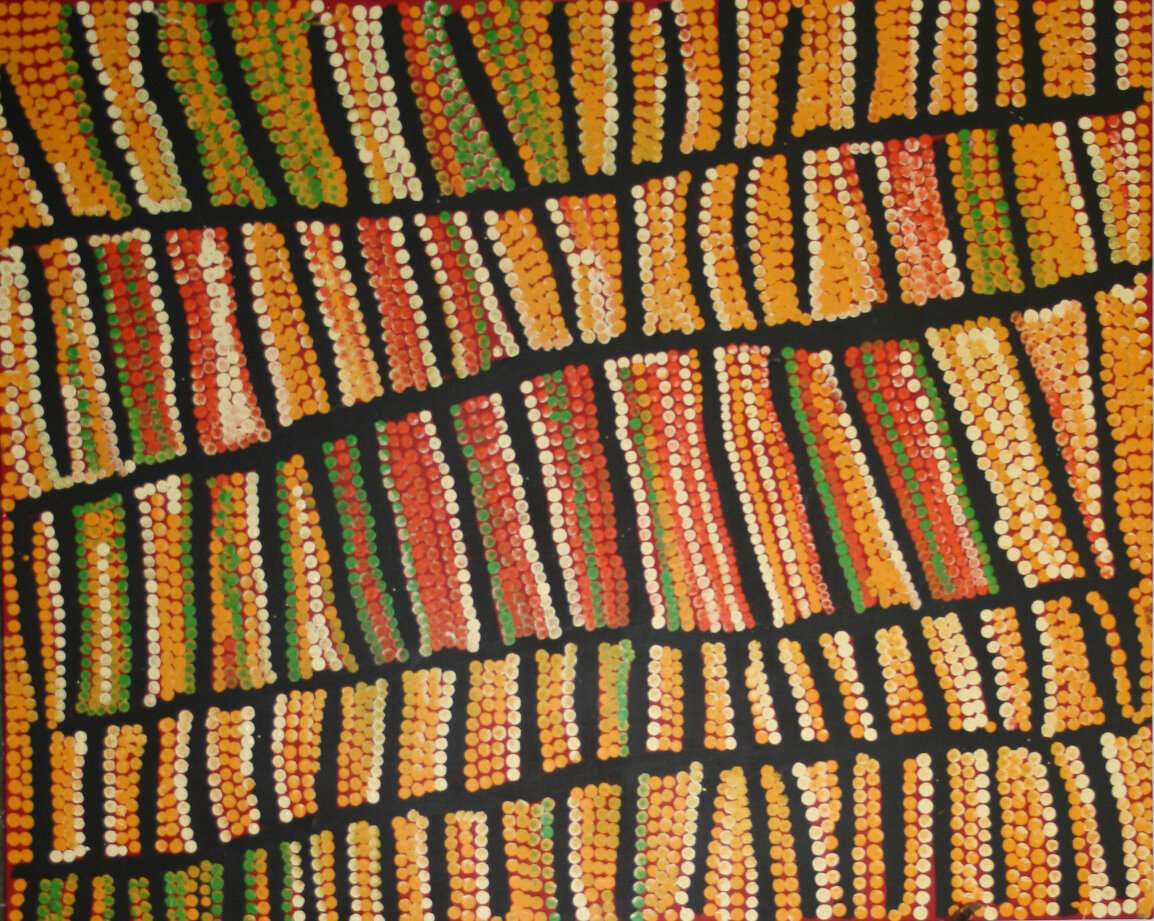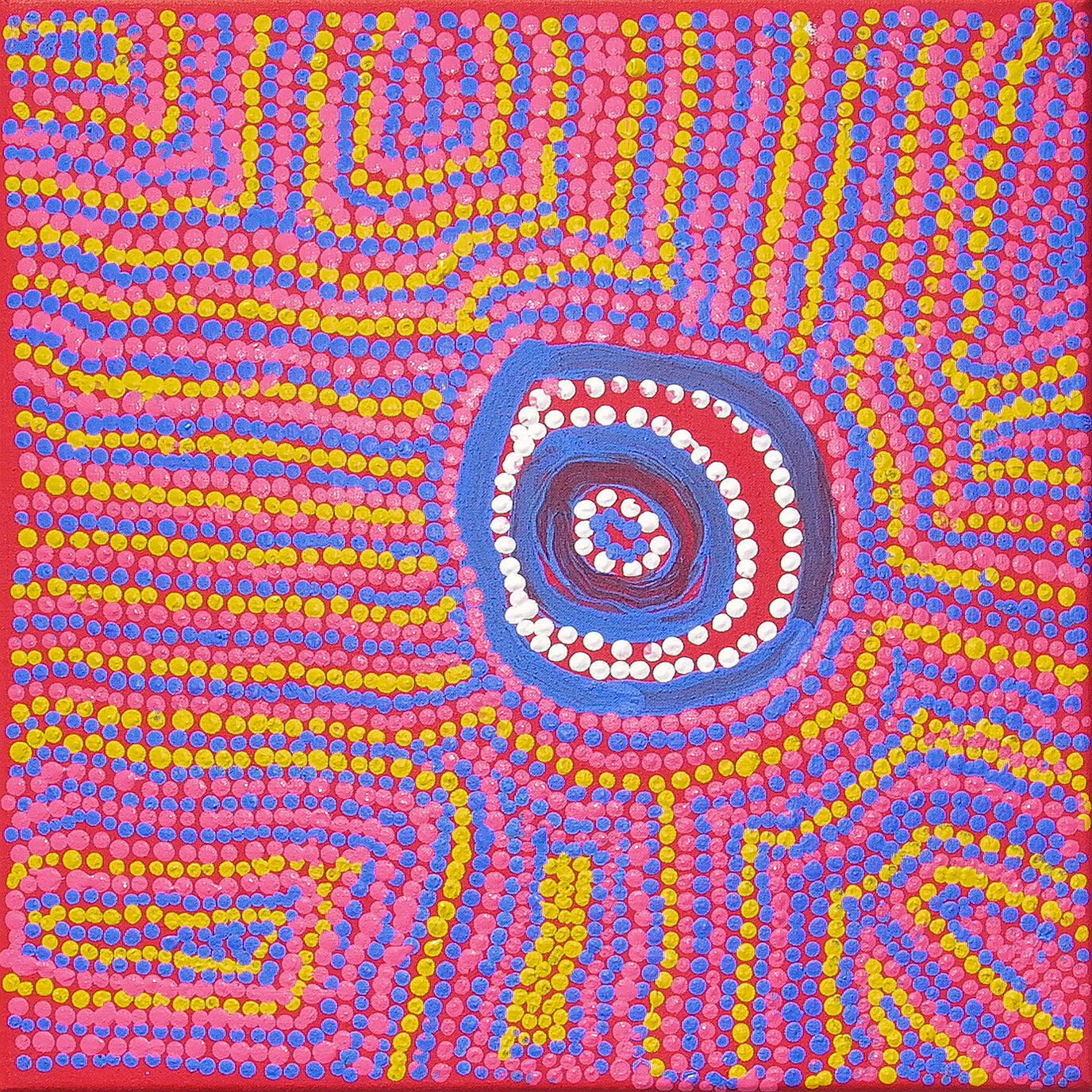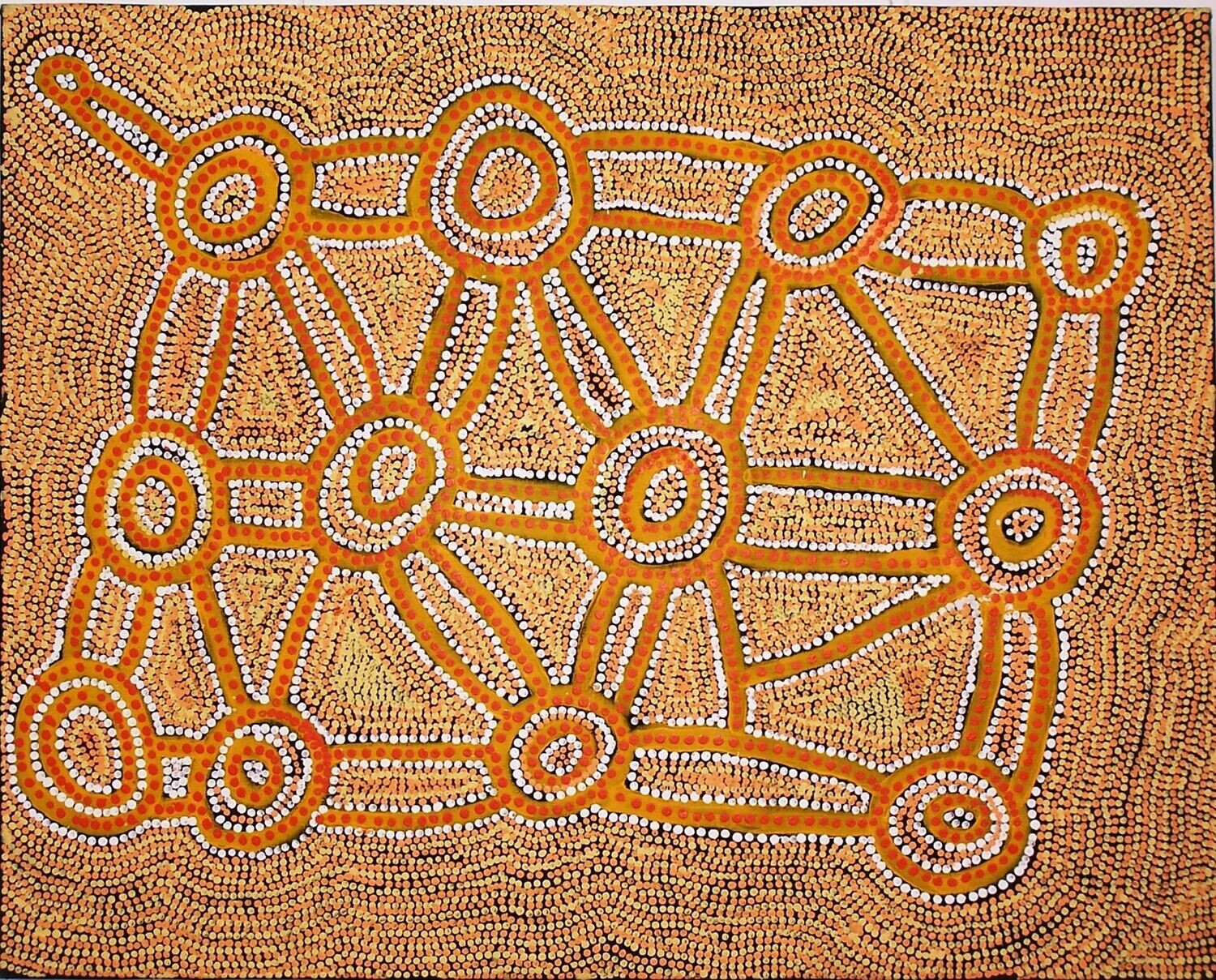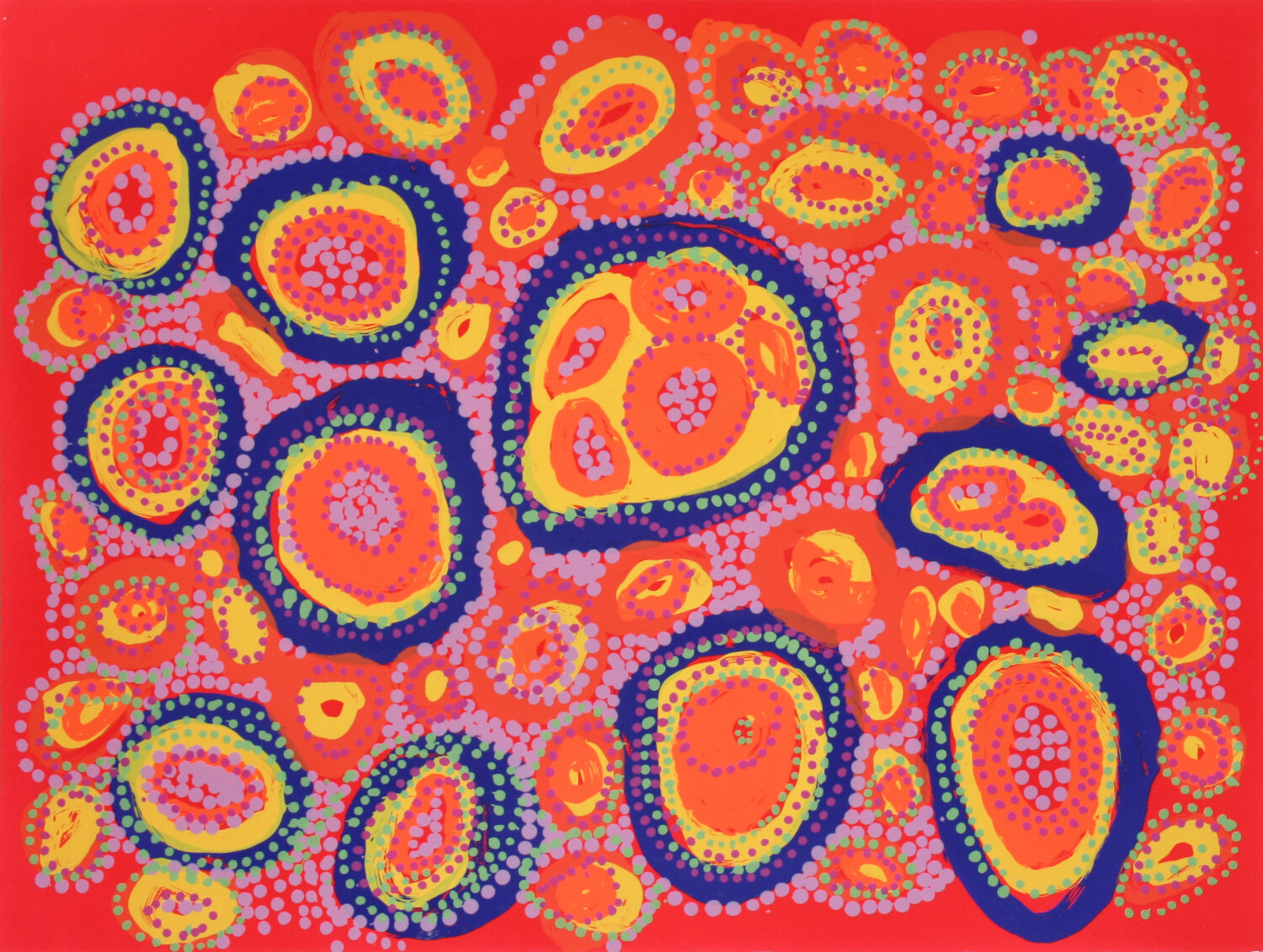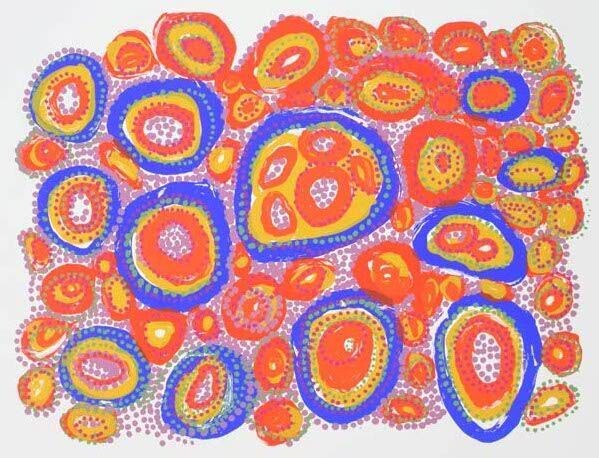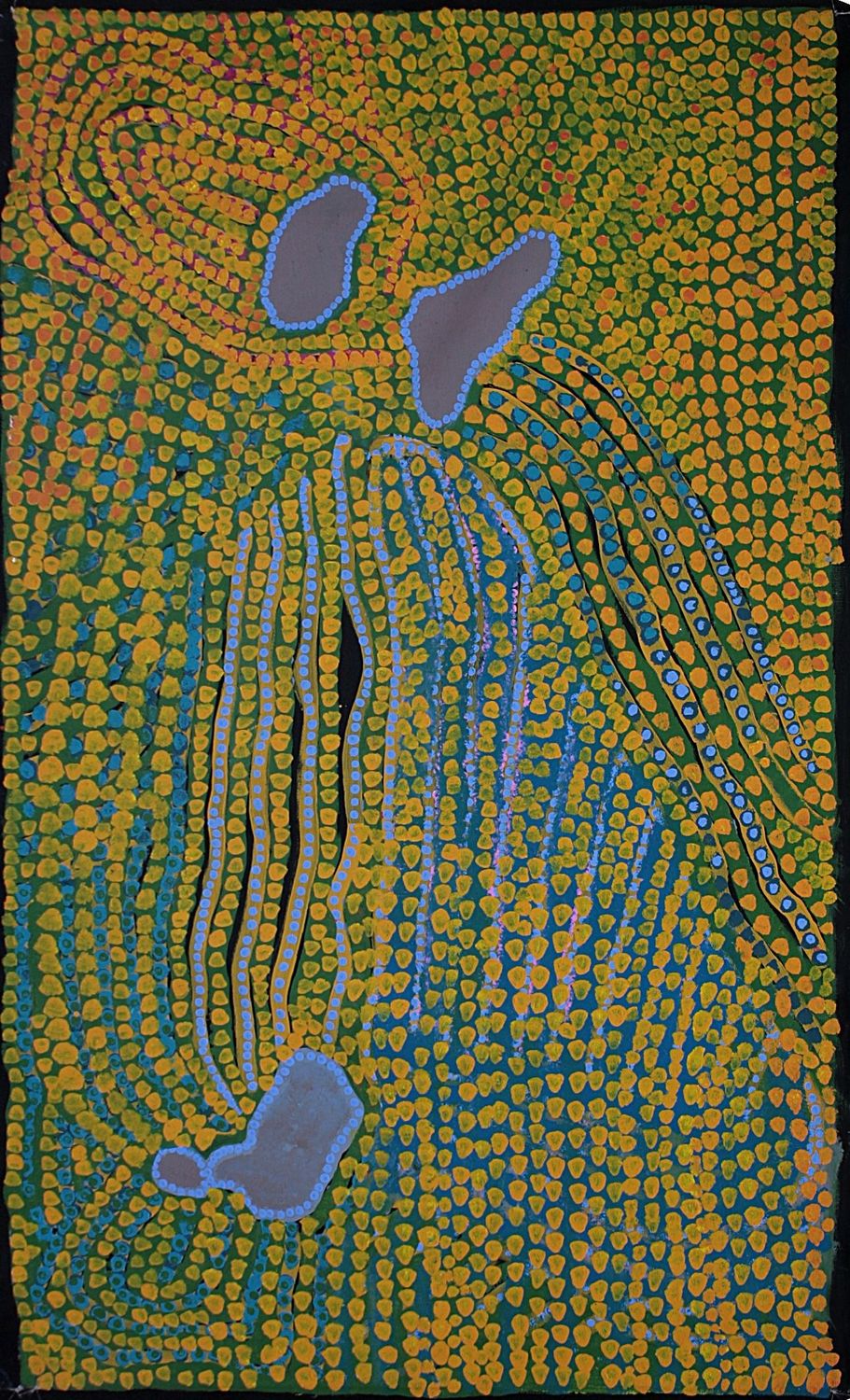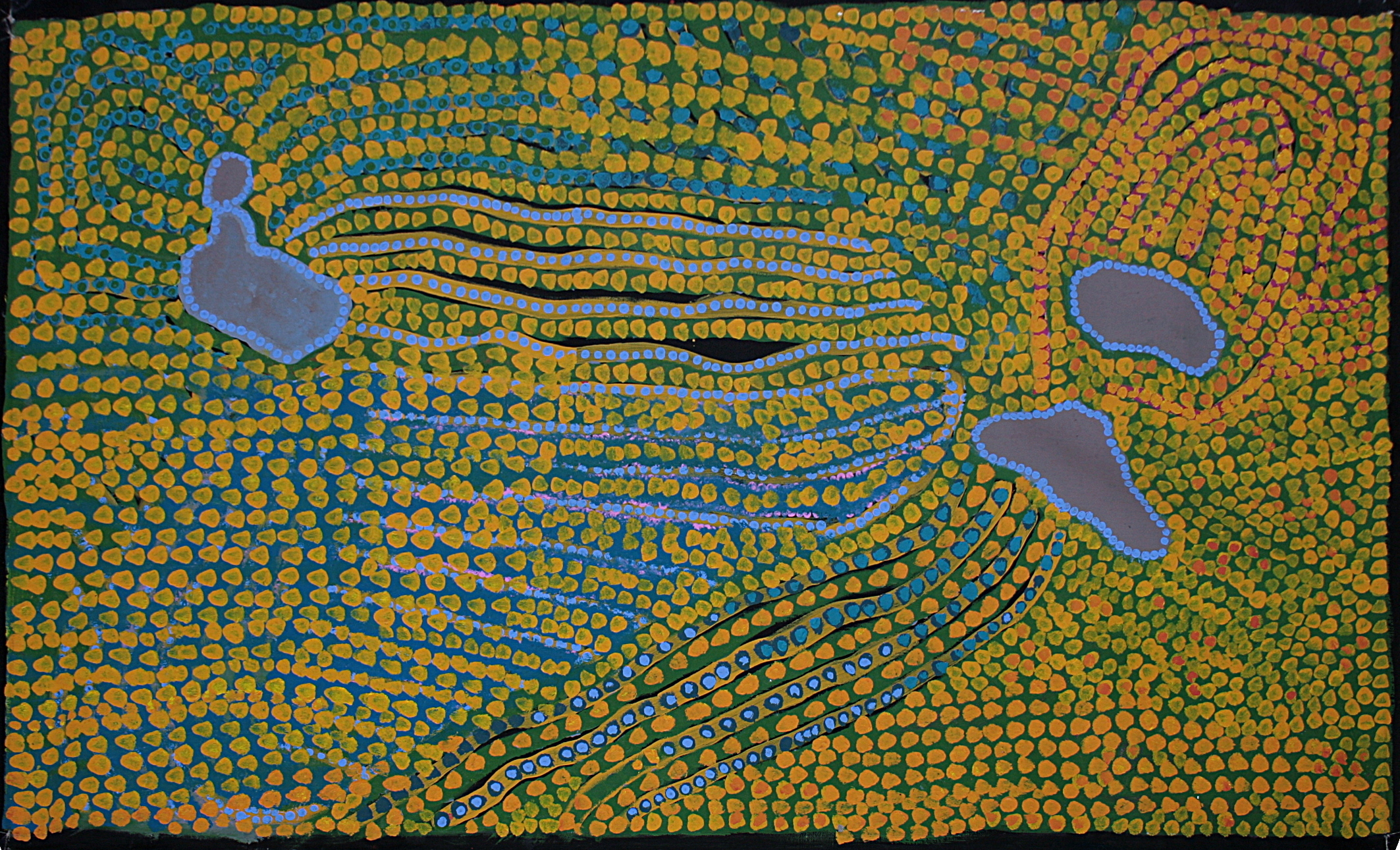Mitjili
Napanangka Gibson
When Miltjili was a young girl, her aunties would tell her stories about her country and the Jukurrpa or Dreaming stories associated with Mina Mina, a sacred site for Napanangka’s and Napangardi’s.
Regions: Kiwirrkurra (Gibson Desert) WA
DOB: c 1932 - 2010
Place of Birth: Winparrku, WA
Significant Country:
Languages: Pintupi / Warlpiri
Art Centre: Gallery Gondwana Studio
The revered Aboriginal elder Mitjili Gibson Napanangka straddles two worlds — a traditional hunter-gather in the Western Desert and that of a internationally renowned artist in Alice Springs.
Mitjili was born around 1932 at Winparrku (Mt Webb), in Pintupi country not far from Kiwirkurra in Western Australia. Her ancestral country is Wilkinkarra (Lake Mackay), her father’s country, located in the Gibson Desert, on the Western Australian and Northern Territory border. Mitjili is from the Pintupi Language group, and also speaks fluent Warlpiri.
After several fleeting encounters with Europeans, Mitjili and her family came into contact with members of the Donald Thomson expedition in 1957 at Lappi Lappi waterhole (Nicker Creek). By then she was a married women expecting her second child. During this time the family moved freely between the Kiwirrkura regions, where Mitjili’s husband Tjiti Tjiti Tjupurrula was a traditional owner, through to the western reaches of Lake MacKay, which is Mitjili’s traditional country.
Throughout the 1960s until the late 1990s while most Pintupi groups who had left the desert had either moved north towards Balgo or east towards Papunya, Mitjili family group had moved independently into Warlpiri country, to the Yuendumu community, staying for over a decade. Mitjili’s family group then moved back towards their own homelands, first to Emu Bore west of Papunya, then to Nyirripi outstation, then to Walangurru (Kintore), over a period of another 15 years. Living between Yuendumu and in the Nyirrpi Community, Mitjili began painting the mythological Tingari Cycle. Mitjili was to spend most of the last decade of her life living in Alice Springs.
Observing her talented niece, Dorothy Napangardi, Mitjili was inspired to paint professionally. After several explorative attempts she began to paint seriously with Gallery Gondwana in 2005. Painting then became the major focus in Mitjili’s life and she attacked it with the same persistence that made her so capable at surviving off the land, becoming a much sought after, successful artist. She and Dorothy share many Dreaming stories in particular the Mina Mina Jukurrpa. She is also the auntie of Judy Watson Napangardi.
When Museum Victoria curated in 2006 the exhibition “Colliding Worlds – First contact in the Western Desert 1932-1984”, it included photos that documented many of Mitjili Napanangka Gibson’s family group at the time of first contact.
Although a traditional woman who spent much of her time in Alice Springs during the latter days of her life, Mitjili always looked forward to her regular bush trips with family, to hunt for goanna, echidna and other bush delicacies. When Mitjili was a young girl, her aunties would tell her stories about her country and the Jukurrpa or Dreaming stories associated with Mina Mina, a sacred site for Napanangka’s and Napangardi’s.
Mitjili paints mythological narrative relating to her country and often will depict narrative through multiple layers in the one painting. She uses an aerial perspective and highlights important sites with a painterly but also spontaneous technique. While the narrative of her paintings is a fluid range of connections that can change with each viewing, there are two consistent themes. There is the focus on her early life spent with close family members and then the reference to a landscape soaked with traditional perceptions of creation.
Mitjili also has a reputation as a skilled wildlife tracker, which has led to her valued contribution to collaborative research into desert ecology. She has also been involved in a number of drama and documentary film productions in Central Australia, including the movie Samson and Delilah (2009) where she played Delilah’s grandmother.
Of the five children that Mitjili raised, two survive (one of whom is Cindy Nakamarra Gibson). She has several grandchildren and great grand children. She had a sharp sense of humour and is very proud to interpret her traditional stories of law and culture especially those relating to the subject of love magic.
You can download Artist CV
NAME
For more extensive information about this artist contact us at
roslyn@gallerygondwana.com.au




